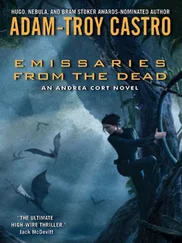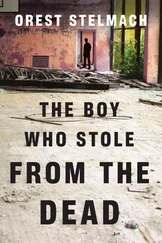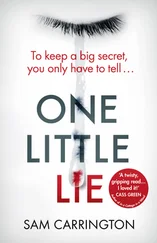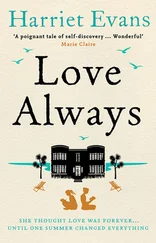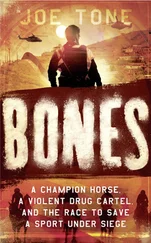Elated with their success, Joe and Liz went back to the FBI to request a reconstruction using the model skull. But the guys at the Bureau are renowned for their caution, and they just weren't ready to get involved with this new procedure-particularly since neither the FBI's forensic artists nor its consulting anthropologists at the Smithsonian Institution were familiar with the technology used to create the model.
Joe was devastated. But then the FBI agent offered one last suggestion-me.

My name is Emily Craig. I'm the forensic anthropologist for the Commonwealth of Kentucky, a job that usually keeps me plenty busy with our own in-state cases-everything from mysterious bones found in the bed of a mountain creek to a backwoods homicide disguised by fire. My unique background as a medical illustrator and sculptor, along with my years of experience in forensic anthropology, means that special bone cases occasionally come to me from out of state, and, of course, I'm happy to help whenever I can. In fact, it was my earlier career in orthopedics that had made me familiar with the combination of medical and industrial technology used to create the model skull. And it was my forensic anthropology training that had spurred in me a newfound desire to give every victim a name. So when Joe told me the horrifying story of the young woman whose remains he'd found, I was glad that I might have the expertise to help identify her.
I had first learned of this new computer technology a decade earlier when I'd encountered it as an illustrator at the Hughston Orthopaedic Clinic in Columbus, Georgia. We'd sometimes resorted to this very process of bone modeling to help surgeons plan their most demanding surgeries, repairing severe complex fractures. Then, when I first entered graduate school in forensic anthropology at the University of Tennessee, I tapped back into this amazing computer technology and worked up a research proposal for incorporating medical CT-scan technology into the traditional forensic practice of three-dimensional clay reconstruction. I was hoping to come up with a computer program that could reliably regenerate a person's face from the skull, combining the best of art and science. This was one of many times that my background in art and orthopedics and my work in anthropology would turn out to dovetail in unprecedented ways.
I went on to develop the process and to present my preliminary research findings at several international conferences, sparking the interest of the FBI. That's how they'd known to recommend me to Joe: They knew that I'd be on the cutting edge of any technique concerning computer-generated faces and CT scans.
But Joe didn't know about any of that background. All he knew was that I was one more scientist who had the power either to take his investigation further or to shut it down once and for all. So he was a little cagey about bringing up the rapid prototyping issue at first. He just started by asking if I might be willing to produce a clay reconstruction of the victim's face.
I wondered why this Wisconsin detective had reached out halfway across the country for a clay reconstruction that he should have been able to get someone to do right in his own home state. Then Joe explained that this job involved not only creating a standard forensic facial sculpture but also working with a computer-generated prototype skull-a job that even the FBI's experts weren't quite confident enough to take on. When I told him I'd do the job anyway, he was elated. As soon as I said I could do the work over the upcoming holiday weekend, he promised to get into his car the very next day so he could hand-deliver the skull replica to me that Friday evening.
Usually, facial reconstruction projects require close collaboration between a forensic sculptor and a forensic anthropologist, but I'm one of the few people who happen to be both. So there I was, alone in my kitchen at two a.m., trying to make a young woman's face come alive with nothing to go on but a laminated paper skull and a set of mathematical formulas telling me the average tissue depths for the face of a young Black woman. I'd played it safe to that point, using tiny erasers to mark the tissue depths and then covering them with clay, arranging the eyes and nose according to standard scientific guidelines. But those hard, cold data weren't enough. My reconstruction didn't yet resemble an actual human being enough to prompt anyone to recognize her. I knew I would have to let my intuition take over in order to bring this sculpture alive.
Slowly my hands took on a life of their own. Following some secret instructions, an intuitive sense of the subtleties of facial structure, my fingertips began exploring the contours of the victim's face. I shut my eyes, relying entirely on my sense of touch.
For a moment, I thought I had something. Then my hands dropped to my sides and I opened my eyes. A headache started to press against my temples as I sat there, frustrated, my statue staring blankly back at me.
Then, without having consciously planned to do so, I found myself reaching out to her left eyelid, tweaking its clay surface ever so slightly. Just that tiny adjustment made her finally begin to look alive. Suddenly, I knew exactly what to do next. Saturating a cotton ball with isopropyl alcohol, I rubbed it across the glass eyes I had inserted, trying to remove the greasy residue left by the clay. As the irises cleared and the corneas brightened, those eyes began to reflect the room light, as real human eyes do. Better. Much better.
Moving more quickly then, I dripped more alcohol into the inside corner of each eye, until large pools formed in the depression where the woman's tear ducts would have been. Slowly, the drops welled up and spilled over, running down the edges of her nose and into the corners of her mouth. She appeared to be crying-which was just what I wanted.
This macabre effect is one of my secret recipes, a way to test the accuracy of the topography of the mid-face area, between the eyebrows and the mouth. When tears fall from a real person's eyes, they follow a fairly predictable pattern down both sides of the face. If a reconstruction is even slightly off, its “tears” will flow erratically, curving back and forth in an odd snakelike effect, or following two irregular routes down each side of the nose. These tears flowed just as human ones do, and watching them flow down her cheeks, I felt my own tears slowly well up. As a scientist, I try hard to stay emotionally detached while I'm working on a case. I make an effort to “think like a murderer” rather than to identify with the victims. But that night I was exhausted, and when that last procedure made the face of that sculpture spring to life, I surprised myself. This woman had been butchered like an animal, and I hadn't yet even allowed myself to truly think of her as a person. She suddenly had a face-a young, innocent face-and the horror of what she had been through overcame me.

As the forensic anthropologist for the Commonwealth of Kentucky, my job is to analyze bones, fragments of extremities, and charred human remains, helping to determine how people died, who they were, and sometimes even what they looked like. On any given day, you might find me beside the smoking wreckage of a plane crash, sifting the ashes of a burned-down backwoods cabin, or in my lab, carefully cataloguing a suspicious-looking pile of bones. I'm often the one to tell the pathologist whether we're looking at homicide or accident, and the evidence I collect might prove crucial in helping investigators decide upon their next step. Sometimes, I'm the detectives' last chance to find a killer or the family's final hope for closure in the loss of a missing loved one.
Читать дальше



